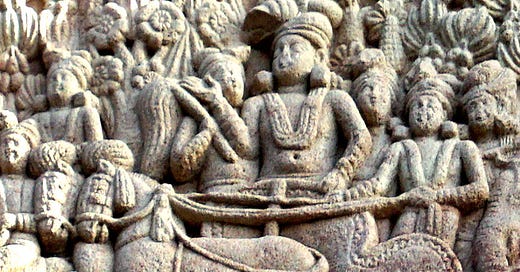Did Kalinga Reform Aśoka?
A Detailed Fact-Check on One of Ancient India’s Most Consequential Landmarks
Aśoka invaded Kalinga. Massacred thousands. Felt remorseful. Embraced Buddhism. Renounced violence. So goes the story as we’ve been told for generations. Over recent years, however, this narrative has come under intense scrutiny, as have all others. People are now beginning to question the veracity of this story because the argument, like most others from Indian history, has acquired a clear political and ideological color over time. Whether or not Aśoka converted has become part of a larger Hinduism-Buddhism debate. It’s not just whether Aśoka repented, it’s whether Hinduism inspires violence while Buddhism discourages it. In this context, Hinduism always stands for Brahminism and Buddhism for caste upliftment. We have already noted in an earlier article how the difference between the two philosophies was fuzzy at best for the longest time, we’ve also noted how “Brahmin” was as coveted a title in Buddhist traditions as it was in Vedic. This time, we examine how Aśoka influences the discourse. In this article, we hope to find out if his remorse and subsequent conversion to Buddhism holds water against objective scrutiny and answer the following questions:
Did he convert to Buddhism?
If he did, was it before or after Kalinga?
Was he apologetic about Kalinga?
Did Kalinga make him renounce violence?
Much of this really just boils down to what really happened after the Kalinga War. It is understood that he reigned for about three decades after the event. Examining his policies and actions during those three decades should help answer all the above questions and settle the argument one way or the other.
Keep reading with a 7-day free trial
Subscribe to Schandillia to keep reading this post and get 7 days of free access to the full post archives.




